Playing with infants and toddlers also helps them develop skills related to reading and writing. In the early years, the development of these skills is called emergent literacy. Young children learn literacy skills when we talk with them, read to them and play with them. The more often the better, and it's never too soon to start reading to babies! Young children also learn literacy from hearing language spoken around them and by being immersed in a print-rich and literacy-rich environment. This means they see lots of print around them and people using print often in their every day lives. Let them see you reading for information, writing shopping lists, and scheduling events on the calendar. Your children will want to learn these reading and writing skills, too. Five Practices That Foster Language and Literacy Development for Infant and Toddlers1. CONNECT! Building strong, responsive relationships with children sets a strong foundation for learning, behavior and health - for their lifetimes. It is the single most important factor in building resilience, the ability to bounce back after setbacks. The adult-child relationship is no less important in language and literacy development. When we express affection by smiling and snuggling, being playful, and really paying attention to our infants and toddlers, we are showing them that we love and care for them. Children learn best when they feel connected with us, and they are encouraged to communicate when they trust that we will be responsive to their efforts and meet their needs.
2. TALK AND SING! Talk directly to infants and toddlers as often as you can. Try to have as many conversations as you can, so all your interactions aren't just giving directions or correcting children. Be sure to use the children's names during these conversations, too. If you are talking about something around you, point to it so children can make the connection between the object and the words you are saying. Respond when children point to things, too. Label the object and talk about it, letting children take turns in the conversation with looks, gestures or sounds. Tell young children stories and stretch conversations. You can expand on what toddlers say with the appropriate language, without correcting them. "I goed fast!" "Yes, you went very fast." Talk to your children about many different events and ideas Describe what you are doing and thinking as you go about your day. Narrate the children's experiences, too. Give them encouragement by noticing their efforts. Becky Bailey, founder of Conscious Discipline®, has a simple script: "You ___ so [or when] ___. That was ___." For example, "You hugged your friend when she was sad. That was kind." Tell lots of stories. Toddlers especially love hearing stories about themselves. You can make up stories about everyday experiences or retell the story in a favorite book. You could even say a nursery rhyme in the form of a story instead of chanting or singing it, as my friend recently did for a toddler she just met: "Do you know the story of the itsy-bitsy spider? The itsy-bitsy spider climbed up a water spout. Then it rained and the rain knocked the spider down. The sun came up, and the spout dried out in the sun. Then you know what the spider did? It climbed up the water spout again." Playful Activity Ideas for Talking:
Singing also gets children's attention and helps them remember what's in the song. Connect the words to movement for an even more memorable experience. Playful Activity Ideas for Singing:
3. DO MATH! Math for infants and toddlers? Oh, yes! Before one year, infants are learning the concepts of “more” and “enough”. They learn to judge short distances and that there is an order of events in their day. These are early math concepts. Toddlers learn to count small numbers of objects, to match shapes, to compare objects and to follow simple patterns. When we play with infants and toddlers to build their language and literacy we can also help them learn math.
4. GET ACTIVE AND MOVE! In the infant and toddler years, play is often a full-body experience! Children are learning through their senses and their muscles as they play. Join in, exploring movement with your children: Crawl, run, jump, dance, and move with your children. Of course, active play has many benefits for physical health and development and stimulates children's ability to think. To boost children's language and literacy development as well, you can encourage them to act out action words, stories, songs and more. Better yet, do it with them! Even if our adult bodies no longer move quite as freely as children's, when w participate in active play we can share in the joy and reap the benefit of movement while encouraging language development at the same time.
5. READ, READ, READ! Reading together with infants and toddlers is the single most effective way to help them become proficient readers later. Reading helps children develop their vocabularies as they are introduced to words that they may not hear in everyday conversation. It helps them to understand language and increases their general knowledge of the world. Make reading a cozy and comfortable time for connecting with your children. Snuggle up! Talk about what you read with children. Involve them in the books, pointing to pictures and words and asking questions that get them to think. Let them decide when to turn the page and when story time is over. It's more important to talk about the book that to read all the words.
Try a new way to build language and literacy skills for infants and toddlers as you play together. Connect, talk, sing, point, count, move, and read. Your children will benefit in many ways, and you will, too! ResourcesBailey, B. A. (2000). I love you rituals. New York: HarperCollins Publishers, Inc.
Center on the Developing Child, Harvard University. (n.d.) Brain architecture. https://developingchild.harvard.edu/resources/serve-return-interaction-shapes-brain-circuitry/ https://developingchild.harvard.edu/resources/5-steps-for-brain-building-serve-and-return/) Greenberg, J. 2012. More, all gone, empty, full: Math talk every day in every way. Young Children 67 (3): 62-64. Kent District Library https://kdl.org/young-children/ https://kdl.org/young-children/ready-to-read/success-basics/ Leiderman, R. C. & Sami, W. S. (2012), Let’s play and learn together: Fill your baby’s day with creative activities that are fun and enhance development. Beverly, MA: Four Winds Press. Schickedanz, J. (2013). So much more than the ABCs: The early stages of reading and writing. Washington, DC: NAEYC. Torbert, M. (2005). Using active group games to develop basic life skills. Young Children 60 (4), p. 73-75. Torbert, M. & Schneider, L.B. (1993). Follow me too: A handbook of movement activities for three- to five-year-olds. Washington, DC: NAEYC. Wiggles, Tickles & Rhymes. (n.d.) Pierce County Library. https://www.piercecountylibrary.org/files/library/wigglesticklesall.pdf Zero to Three http://www.zerotothree.org/child-development/early-language-literacy/earlyliteracy2pagehandout.pdf www.zerotothree.org/resources/1514-beyond-twinkle-twinkle-using-music-with-infants-and-toddlers
0 Comments
During the preschool years, children's language is developing most rapidly, especially from birth to age three. Children are learning to understand language (receptive language) and to use language to communicate (expressive language). Children's language abilities affect their learning and development in all areas, and they begin at birth, as babies use cries and body language to communicate. Of course, infants and young children develop language with our help; we'll explore ways to support them from birth to age five. Theories of Language DevelopmentDo you wonder how young children learn such a complex skill as communicating with language? Three scientists have offered theories to explain how to understand how children learn to understand language and to speak so amazingly quickly and easily. Each of these theories contributes toward our current understanding of language development.
Language Development Milestones and How to Support ThemLanguage develops best when children have interactive and responsive relationships with caring adults. Caregivers who are familiar with the developmental stages and are attentive to each child’s individual needs can respond quickly and consistently to meet those needs. This cycle of responsiveness is crucial, assuring children that they are safe and cared for and allowing them to freely explore the environment. Each child develops at his or her own pace, but generally children reach language milestones in the same order during the same range of time. Let's look at these accomplishments and what we can do to foster them. Birth to 8 Months 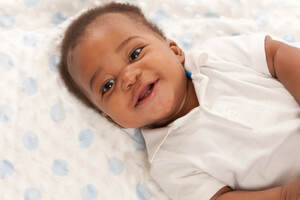 Infants begin communicating with their caregiver at birth. They are comforted by familiar and soothing sounds and intently focus on faces. They communicate their needs by crying and their contentment with cooing. In just a few weeks after birth, they begin to smile when spoken to and maintain eye contact. They communicate through body language, holding out their arms to be picked up; reaching, clapping, and turning in response to familiar words and phrases. They also begin to use joint attention to communicate and as a tool for learning the names of objects. Joint attention is when an infant follows the gaze of a caregiver to an object.
Supporting Language at this Stage: -Talk soothingly to very young infants. They respond positively to a soft, high-pitched, melodic voice. This is sometimes referred to as motherese; it isn’t baby-talk. Even young infants initiate communication frequently, so be on the lookout for children's efforts and respond to their attempts. -Play connecting games to build relationships (See the blog post for examples). -Use serve and return interactions, responding to the looks, sounds, and gestures you see, then pausing for the infant to take a turn. Responding to non-verbal communication tells infants that they are heard and encourages them to communicate more often. -Infants need to hear lots of language, so talk with them a lot. You can narrate what you are doing (self-talk) and what children are doing (parallel talk). For example, “I can see that your diaper is wet. I am getting a new one so I can change you" (self-talk). “You are putting the blocks in the bucket!” (parallel talk). You will be expanding children's vocabulary and giving them the interaction they are eager for. -Books are for babies, too! Reading to them every day is good for Infants of all ages. They learn the flow of language as they tune into pictures of familiar objects. Having access to books helps them enjoy the closeness and interaction as they are read to. They can also practice shared attention as you discuss stories, and they can initiate reading by bringing you a book. 8 to 18 Months 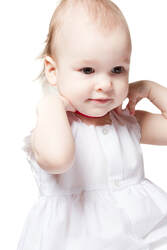 During this time, infants can understand much of what they hear. They can follow simple instructions like, “go get your ball”. They recognize the names of familiar objects and respond to their own name. They turn their attention to someone that is speaking and make eye contact. This is also an exciting time of first words! Infants begin to use one word phrases accompanied by hand gestures and non-verbal cues to communicate. These holophrases can convey an entire sentence. For example “Cup?” might mean "May I have my cup?" By 18 months, infants may have 30 - 50 word vocabularies, but this varies greatly based on the individual child.
Caregiver Responses: Continue to use the strategies recommended for younger infants, and add new songs, word games, and rhymes. Model listening and responding, and play interactive sound and word games that mimic the turns of a conversations – such as beating a drum or call and response songs where children repeat after you. From 18 Months to 3 Years 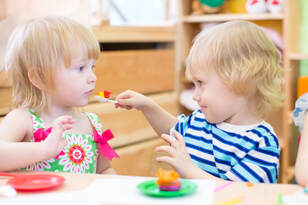 Toddlers listen, respond and gain new words every day; their vocabularies grow rapidly during this stage. Toddlers can follow two-step instructions, and begin to appreciate and respond to funny comments and rhymes. They start to talk with peers, listening and responding to one another. Toddlers' speech moves quickly from two-word and three-word sentences to more complex sentence structure by age three.
Caregiver Responses -As toddlers become more verbal, you can use new techniques to scaffold their language development: Recasting and expansion. Recasting means restating the child’s sentence using correct grammar. You don't need to point out the mistake or correct the child, simply reword what they say. For example, if a child says “Spot digged a hole,” Say, “Yes, Spot dug a hole.” Expansion means adding to the child’s statement; “Yes, Spot dug a big hole. He wanted to bury his bone.” Your job is to model mature language and increase vocabulary. -You can also use language to describe emotions and help toddlers begin to identify their feelings. Before reminding toddlers to "use your words", tell them the words to use when they are upset or in a conflict with a peer. Young children need lots of modeling, support and practice to use language to help them regulate their emotions. Help them find the words to identify their feelings. “It looks like you are really angry that it's time to stop playing. Let's find something that will help you feel better.” -Ask open-ended questions. This also extends learning and invites the child to express himself or herself. -Provide toddlers with a variety of new materials and experiences. This expands vocabulary and keeps toddlers engaged in their environment. Explore the outdoors, following the children’s lead and talk about the things they find interesting. -Continue to provide access to books and lots of opportunities for reading every day. Read to toddlers in small groups and one-on-one, and let toddlers to explore books independently as well. From 3 to 4 Years 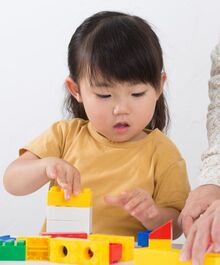 Three-year-olds are able to more effectively use language to communicate. They've learned the rules of conversation and begin to talk more with peers and caregivers. They can answer questions, so ask them starting with who, what, when, where and why. You may even pose more complex questions, such as how and if/then. Threes can usually follow three-step instructions. Three-year-olds are learning multiple words to describe and talk about their feelings. They are beginning to resolve conflicts with peers and provide comfort with language. They begin to use phrases such as “I think” and “I have an idea” and “I guess” that indicate their thought process. Threes can more consistently apply grammar rules regarding past tense and possessives, and can more accurately use pronouns like he, her, they and we.
Caregiver Responses: Direct interactions between caregivers and children are still important, but three-year-olds interact with one another more frequently. Your role is to create an environment that is supportive of these peer interactions: A classroom with well-defined and engaging learning centers, spaces for small group and one-on-one activities, and interesting materials that foster problem-solving and require cooperation (i.e. simple board games, dramatic play, and construction materials). Provide consistent and clear expectations that allow children to explore with confidence. Include both small and large group activities (reading, storytelling, singing, and word games) that extend threes' vocabulary and model effective social communication. From 4 to 5 Years 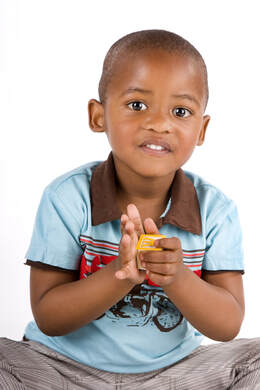 Four-year-olds have a greater understanding of of grammar rules: Over-regulation (for example, adding -ed for all words to indicate past tense) gradually disappears by about age 5. Four-year-olds may have trouble with certain types of words: opposites, negatives, connectives (if, or, but) and question words (how, why, when). From four to five years, children's vocabulary grows from about 4,000 words to about 8,000- 12,000 words. Four-year-olds converse more with other children, adapting their speech to the needs of the listener.
Besides continuing to develop receptive and expressive language, preschoolers are also developing literacy - the knowledge and skills related to reading and writing. For ideas about what is involved and how you can support emergent literacy from birth to age five, watch for our next blog post in May. Until then, enjoy helping your young children's language skills develop! ReferencesTexas Early Learning Council. (2013). The Texas Infant, Toddler, and Three-Year-Old Early Learning Guidelines. https://littletexans.org/Media/FullGuidelinesEnglish.pdf
Kostelnik, M. J., Rupiper, M., Soderman, A. K., & Whiren, A. P. (2014). Developmentally Appropriate Curriculum in Action. Upper Saddle River, NJ: Pearson Education, Inc.
To play a connecting game, just include these 3 things:
Here are 13 of my favorite connecting games to play with infants and toddlers. I hope you enjoy some of them! Bumpy Road Smooth Road, Smooth Road. (move child in circular motion) Bumpy Road, Bumpy Road. (bounce your child on your lap) Rough Road, Rough Road. (bounce higher and faster) Hole. (dip child between your legs) Did You Ever See a Baby Did you ever see a baby, (have your child sitting on your lap) A baby, a baby? Did you ever see a baby, Go this way and that? (rock from side to side) Go this way and that way, (forward and back) And that way and this way. (side to side) Did you ever see a baby, Go this way and that? (forward and back) Giddy Up Horsey Giddy-up, giddy-up, giddy-up horsey. (bounce child on knees) Giddy-up, giddy-up, go, go, go Giddy-up, giddy-up, giddy-up horsey. Giddy-up, giddy-up, Whoa! (let child slip through knees) I Bounce You Here I bounce you here, I bounce you there, (bounce child on knees) I bounce you, bounce you, everywhere. I tickle you here, I tickle you there, (gently tickle child) I tickle you, tickle you, everywhere. I hug you here, I hug you there, (hug child) I hug you, hug you, everywhere! Let’s Go Riding in an Elevator Let’s go riding in an elevator. (hold child in front of you on lap) Let’s go riding in an elevator. First floor, (at “first floor” start to lift child up Second floor, rising up a little at each floor) Third floor, Fourth floor, Fifth floor, (by “fifth floor” child should be high) Doooowwwwwnn! (bring child quickly back to lap) Shoe the Little Horse Shoe the little horse, (pat child’s left foot) Shoe the little mare, (pat child’s right foot) But let the little colt (bicycle child’s feet around and around) Run free everywhere.
Elephant Song One elephant went out to play, (hold up one finger) Over the hills and far away. (wave finger like it is going over the hills) She had such enormous fun, (on “enormous” circle arms out and around) That she called for another elephant to come. (cup hands over mouth) “Oh Elephant!”… (call out and then pound the floor for the running elephant sound) (Repeat with as many elephants (fingers) as you want) Little Flea Creeping, creeping, little flea, (creep fingers up child’s body and down again) Up my leg and past my knee. To my tummy, on he goes, Past my chin and to my nose. Now he’s creeping down my chin, To my tummy once again. Down my leg and past my knee, To my toe that little flea. GOTCHA! (gently tickle baby’s tummy and switch to other foot) One, Two, Three One, two, three, (tap on baby’s knee) Tickle your knee. (gently tickle baby’s knee) Four, five, six, (tap on baby’s tummy) Pick up sticks. (gently tickle baby’s tummy) Seven, eight, nine, (tap on baby’s chin) You’re all mine! (hug baby) Round and Round the Garden Round and round the garden, (make a circle in child’s palm) Goes the teddy bear. One step, two steps, (fingers walk up child’s arm) Tickle you under there. (gently tickle child under arm) Round and round the haystack, (make a circle in child’s other hand) Goes the little mouse. One step, two steps, (fingers walk up child’s arm) Into his little house. (gently tickle child under arm)\ Two Little Eyes Two little eyes to look around. (point to child’s features as mentioned) Two little ears to hear each sound. One little nose to smell what’s sweet. One little mouth that likes to eat. Movement Games |
| Catch Me if You Can! Toddlers love to be chased. The object: catch the child with a big bear hug and tickles You can pretend to be different types of animals. Come and Get me! If your infant can crawl, spread some cushions and pillows on the floor. Stay at ground level and peep out from behind them, encouraging her to crawl over them. |
Author
I'm Diane Goyette, a Child Development Specialist, Trainer, Consultant and Keynote Speaker. I'm excited to share my blog!
Whether you are a child care provider or administrator, a teacher, a parent, or a helping professional who supports young children and families, I hope you get some helpful tips to make your job easier and more enjoyable!
Archives
August 2023
July 2023
June 2023
May 2023
April 2023
March 2023
February 2023
January 2023
December 2022
November 2022
October 2022
September 2022
August 2022
July 2022
June 2022
May 2022
April 2022
March 2022
February 2022
January 2022
December 2021
November 2021
October 2021
September 2021
August 2021
July 2021
June 2021
May 2021
April 2021
March 2021
February 2021
January 2021
December 2020
November 2020
October 2020
September 2020
Categories
All
Adult Child Relationships
Autism
Connecting Games
Curriculum Areas
Diversity
Emotional Support
Encouragement
Equity & Inclusion
Four C's Framework
Holidays
Infants & Toddlers
Language & Literacy
Learning Centers
Mindfulness
Physical Activity
Play
Positive Guidance
School-Age Children
Self Care
Self Regulation
Social Emotional Learning

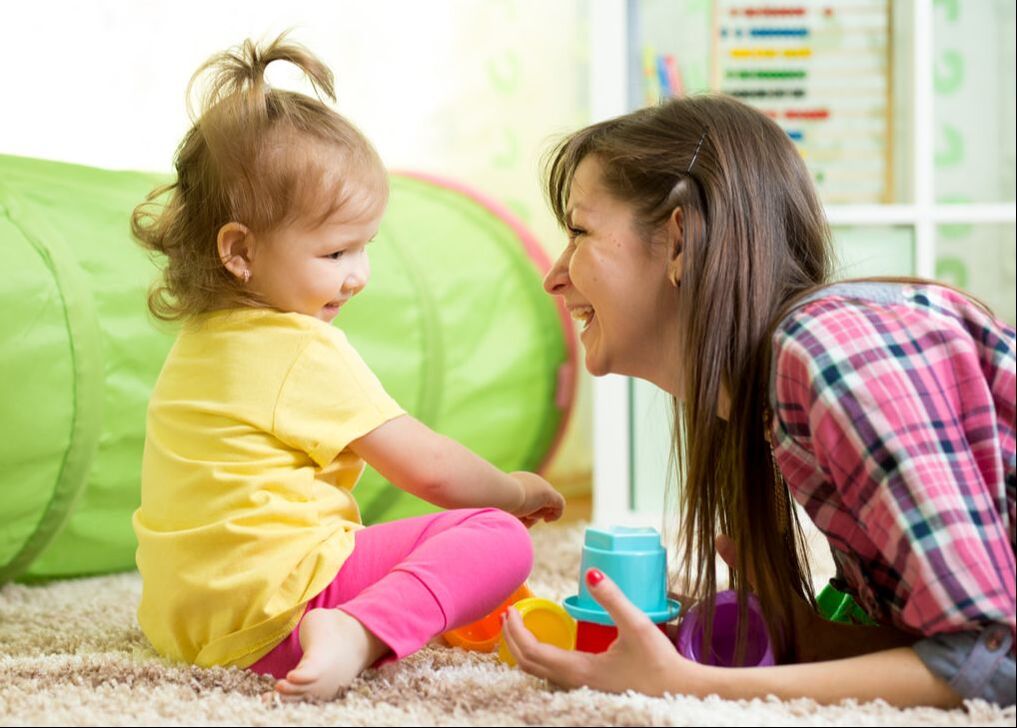
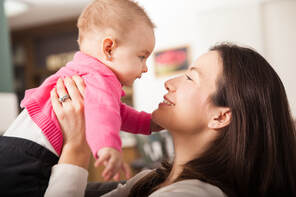
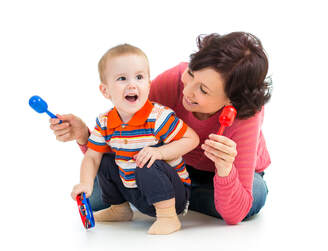
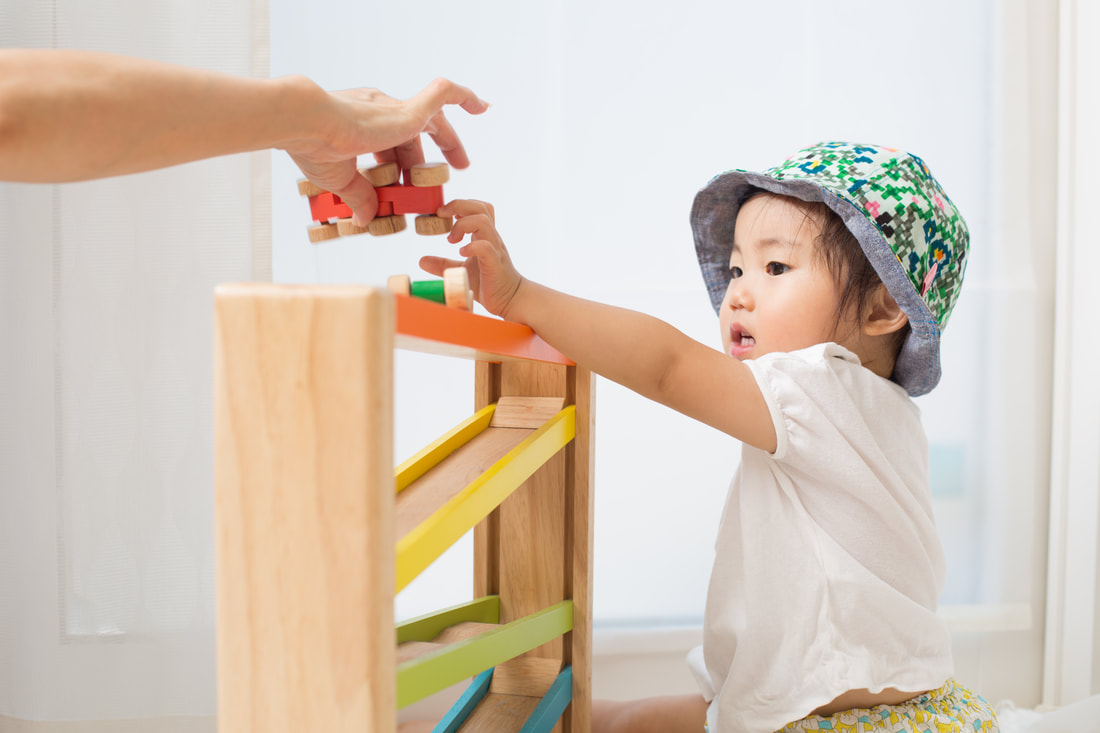
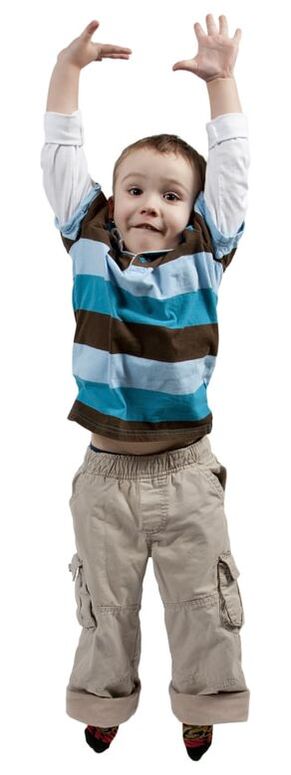
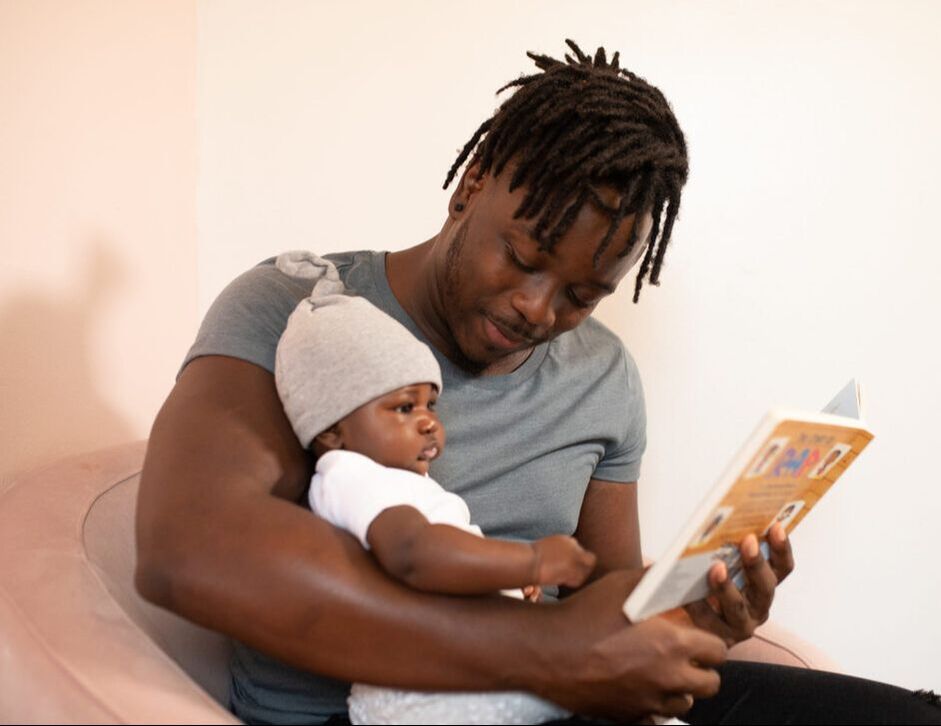
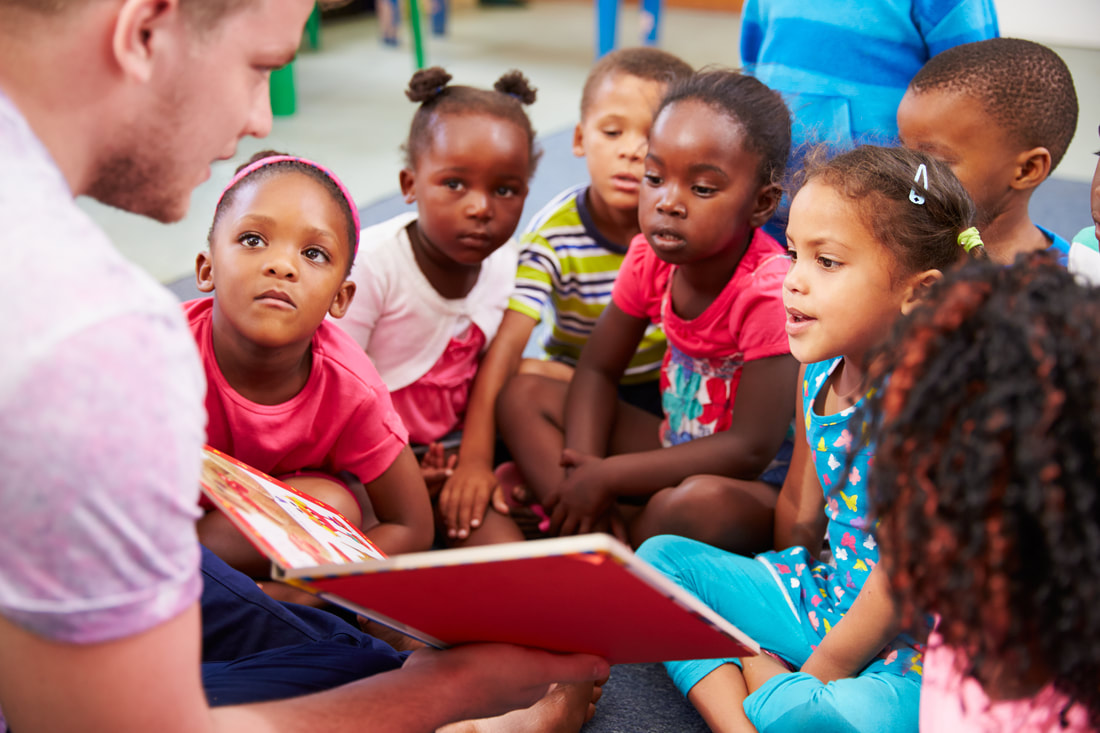
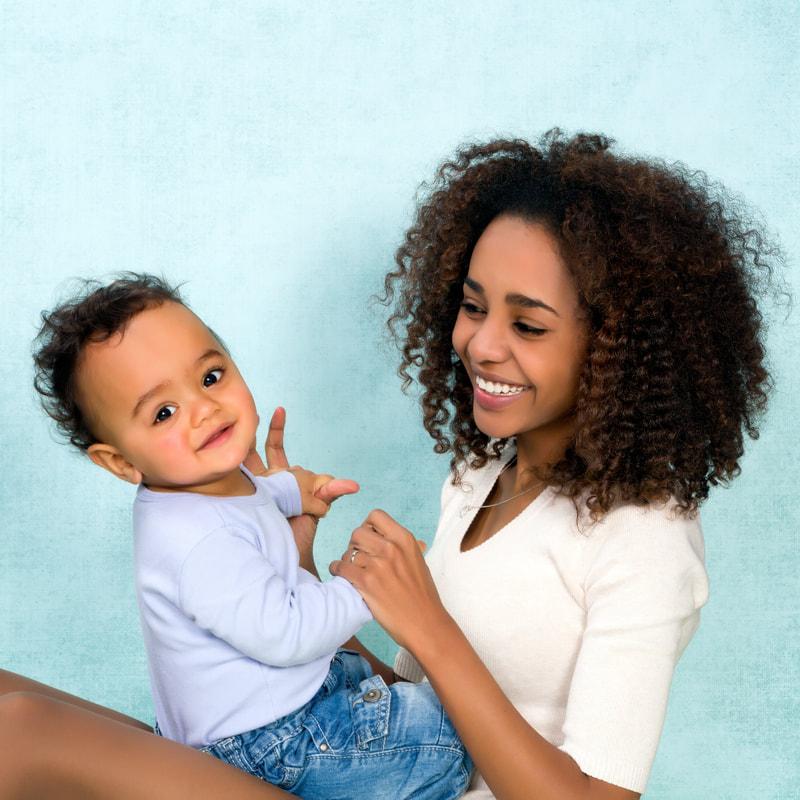
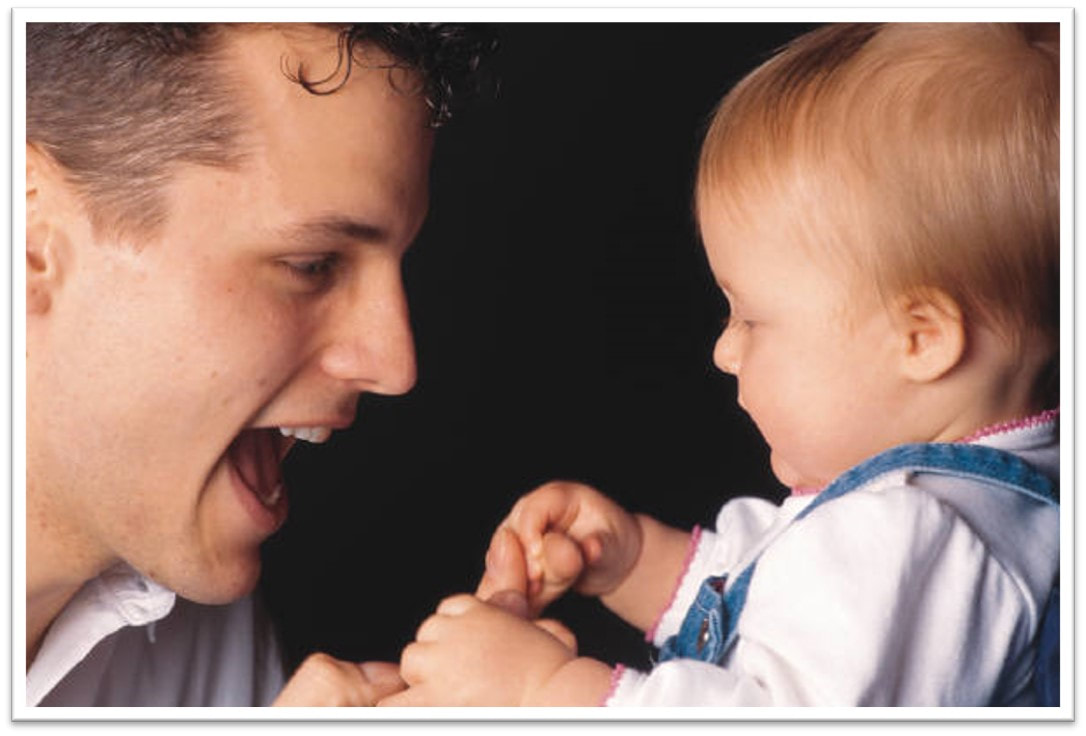
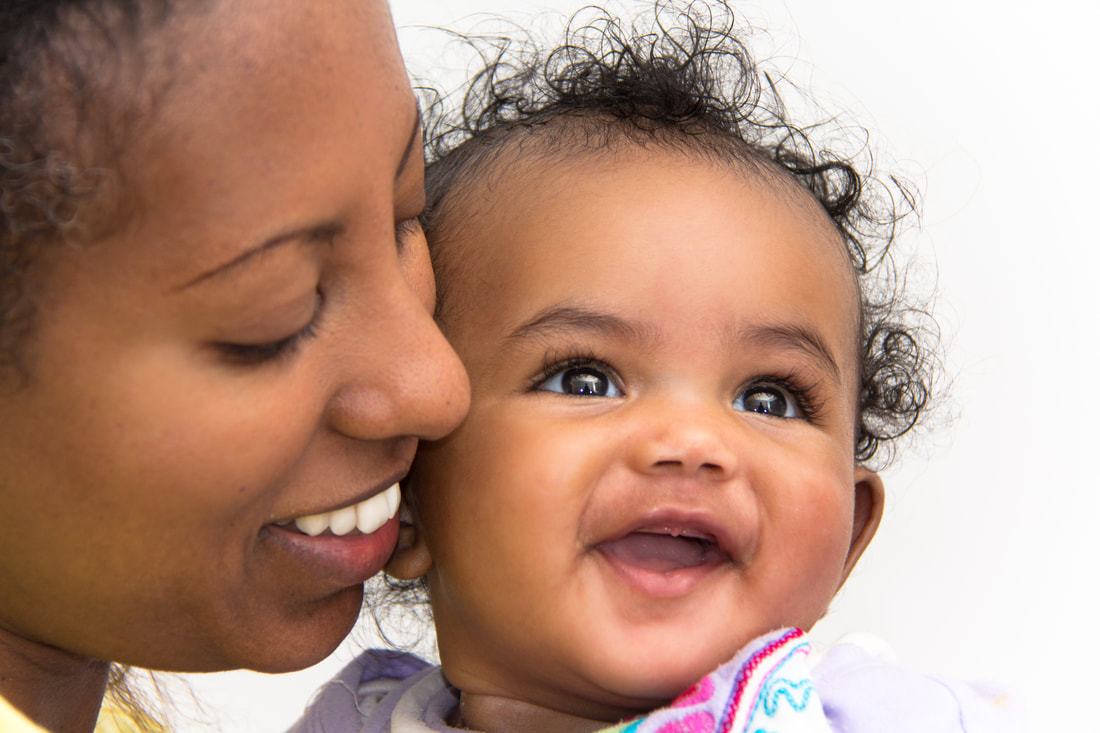
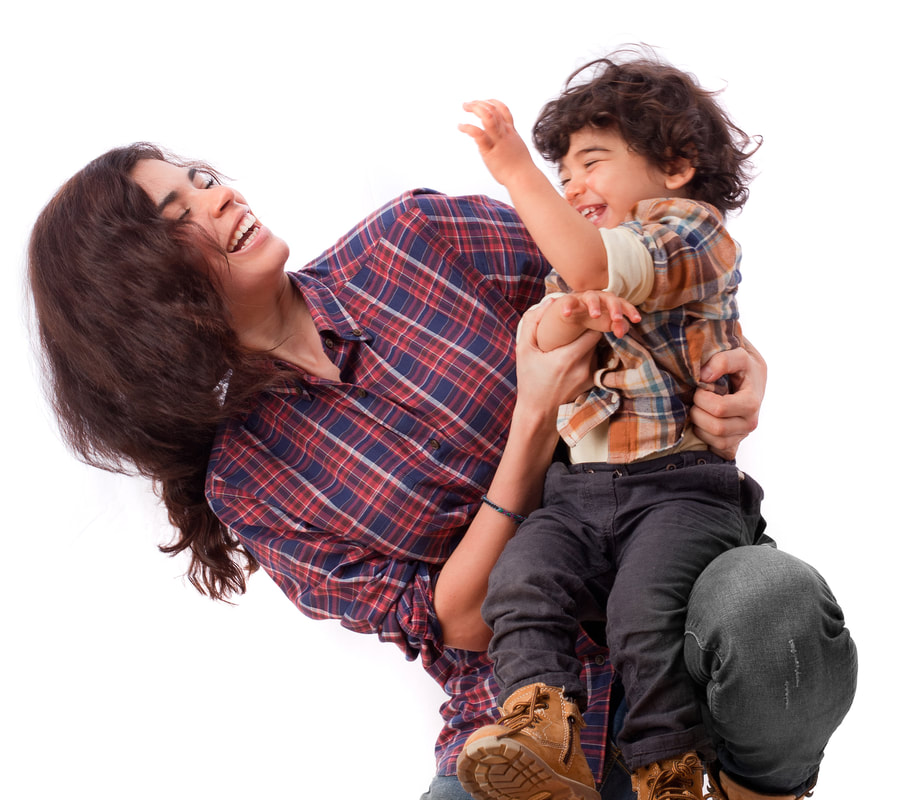
 RSS Feed
RSS Feed